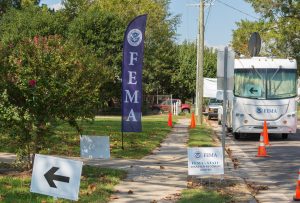Plus, how storm-related deaths may be underreported
FEMA is out with two more reports on Hurricane Ian that offer insight on how to reduce outages of critical infrastructure utilities and reduce water intrusion through doors and windows. Plus, a new study shows total deaths from U.S. hurricanes over the past 32 years may be 13-times greater than official numbers. It’s all in this week’s Disaster Management Digest.

From FEMA
Protecting Utilities: FEMA last week released Reducing “Loss of Utility” Impacts to Critical Facilities – Recovery Advisory 2. It is the second of now three reports on Hurricane Ian from FEMA’s Mitigation Assessment Team (MAT), part of its Building Science Disaster Support Program. We shared the first one in our last newsletter on the Cat-5 hurricane’s flooding often exceeding expectations. Ian caused widespread loss of utility services, in some cases standby generators. FEMA notes that loss of potable water was a “particularly significant impact of Hurricane Ian…(especially for) those who remained, including first responders, hospital staff and occupants, and those in hurricane evacuation shelters.”
Loss of fire protection, working toilets and proper cleaning resulted in several hospitals having to shut down and evacuate patients elsewhere. “Hurricane Ian and other recent natural hazard events have demonstrated that critical facilities do not have to be structurally damaged to render them unable to function and perform their critical missions,” the report said. It suggests ways to reduce that vulnerability at the facility level by providing alternate systems that can provide services normally provided by utilities, such as electricity, fuels and combustible gases, potable water, and sanitary sewer service.

From FEMA
Reducing Water Intrusion: FEMA’s other new report is Reducing Water Intrusion Through Windows and Doors – Recovery Advisory 3. As we know, one of the biggest causes of hurricane damage – both immediate and long-term – is water intrusion into a building. This report reminds us that intrusion can result in costly damage, and dry rot and fastener corrosion that weakens the door or window or the wall itself. It discusses the importance of testing windows and doors for water penetration resistance, how inadequate flashing contributes to the problem, as well as lack of proper maintenance. The report has a section on Florida Building Code exceptions to water intrusion testing and Florida product approvals.

A FEMA Mobile Disaster Recovery Center from Hurricane Michael, October 2018
Hurricane-related Deaths: A new study by Columbia University in this month’s journal Science Advances attempts to quantify the number of indirect deaths from hurricanes. What they found suggests that hurricanes have killed far more people than the official numbers and that a disproportionate number of victims are poor, vulnerable, and minorities. The study says that from 1988 to 2019, more than 18,000 people likely died from tropical storms and hurricanes in the U.S. compared to the 1,385 that NOAA has officially listed. The study’s authors caution those numbers aren’t directly comparable. A team of public health and storm experts reached those figures by looking at changes in a storm-hit county’s overall deaths just before, during, and after a storm and then comparing those to normal years. The study says many deaths occur in the weeks and months after a storm in people who get injured in the cleanup or develop lung problems, infections, and mental health issues indirectly related to the calamity.
LMA Newsletter of 8-21-23


